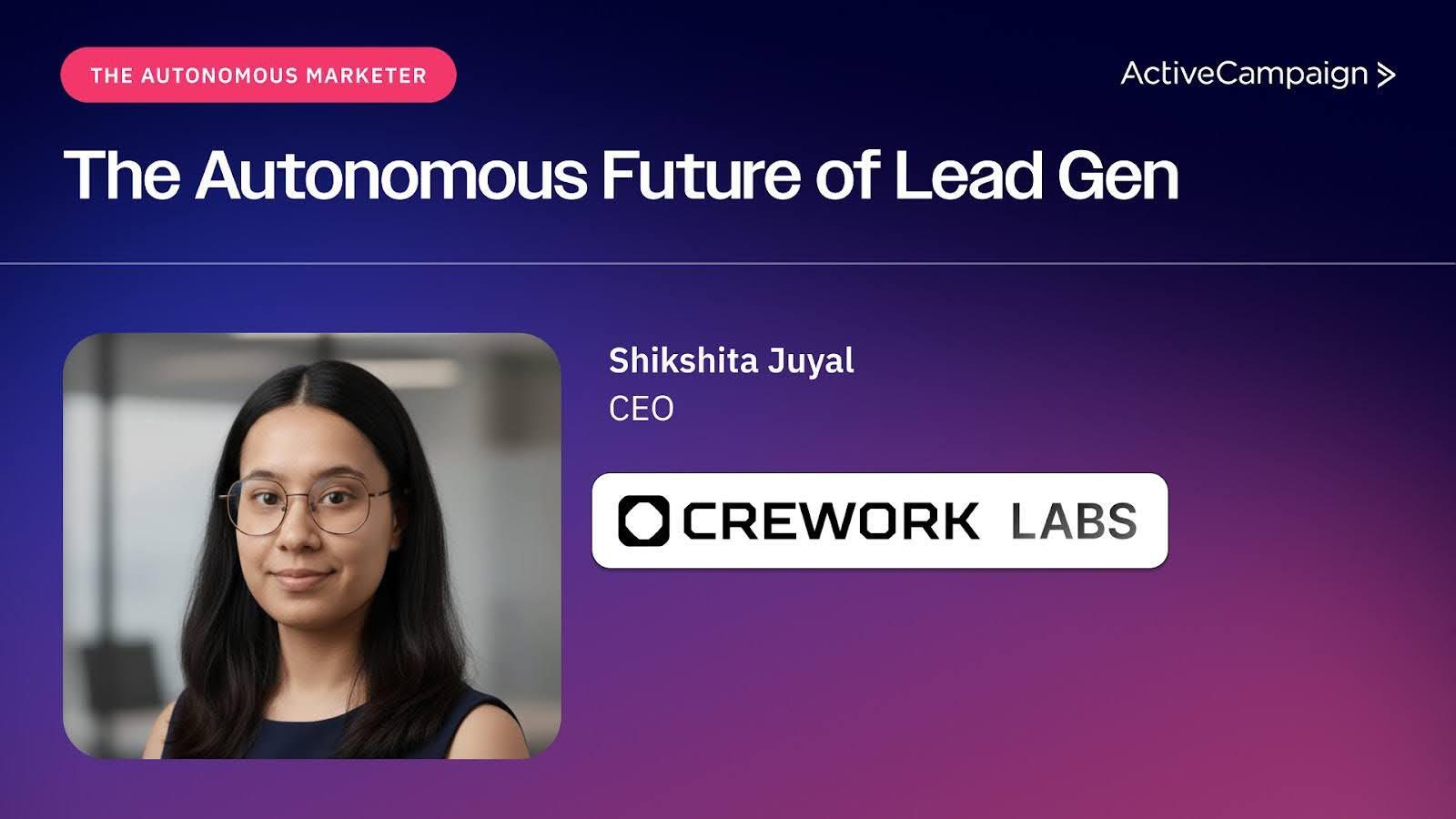Ask any marketer about outbound marketing, and you’ll probably get the same old canned response:
“Outbound marketing is an outdated, interruptive model. Inbound is the way to go.”
While it’s true that outbound marketing is interruptive, it's not an approach you should just throw away.
In fact, the most effective marketers take advantage of both inbound and outbound approaches.
This article will discuss the difference between these 2 marketing types and when each is most appropriate. Then, we’ll dive deep into 8 powerful tactics to level up your outbound marketing strategy.
Table of contents
What is outbound marketing?
Outbound marketing encompasses any marketing tactic in which the company initiates the conversation and pushes the message out to its audience.
It’s often referred to as interruption marketing, as most outbound channels and tactics focus on interrupting a customer and capturing their attention.
Ads are the most common example of this.
An ad, whether a digital display ad, a social media ad, or a traditional billboard ad, interrupts the viewer while doing something else.
To understand what marketers mean when we talk about outbound marketing, it’s helpful to understand the inverse approach: inbound marketing.
Outbound marketing vs. inbound marketing: What’s the difference?
Inbound marketing pulls customers in and allows buyers to initiate the conversation.
Outbound is the opposite: it pushes messages to customers, which signals the start of the conversation.

Consent is the main difference between the 2 approaches.
With inbound marketing, there is always explicit consent.
If a customer stumbles across your blog post, it’s because they searched Google for a specific keyword. If they see a piece of content you’ve published on your Instagram page, it’s because they’ve chosen to follow your account.
With outbound marketing, there is no consent.
Ads appear in the middle of a user’s social media feed or at the top of a search result, and billboards and bus ads appear in front of people as they go about their days.
Because of this, the marketing community has a fair bit of contempt for outbound.
Let’s explore why because it’s not quite the black-and-white, good-and-evil situation many make it out to be.
Why all the hate for outbound marketing?
Read any article, blog, or social media post about outbound marketing, and you’ll likely see 1 message:
Outbound sucks; do inbound.
Here’s HubSpot’s definition:

While there are some good reasons for this opinion, it’s important to understand that it’s not a particularly mature or realistic view. In fact, most brands and marketers—even those who write articles that tell you to only invest in inbound—engage in a little bit of both.
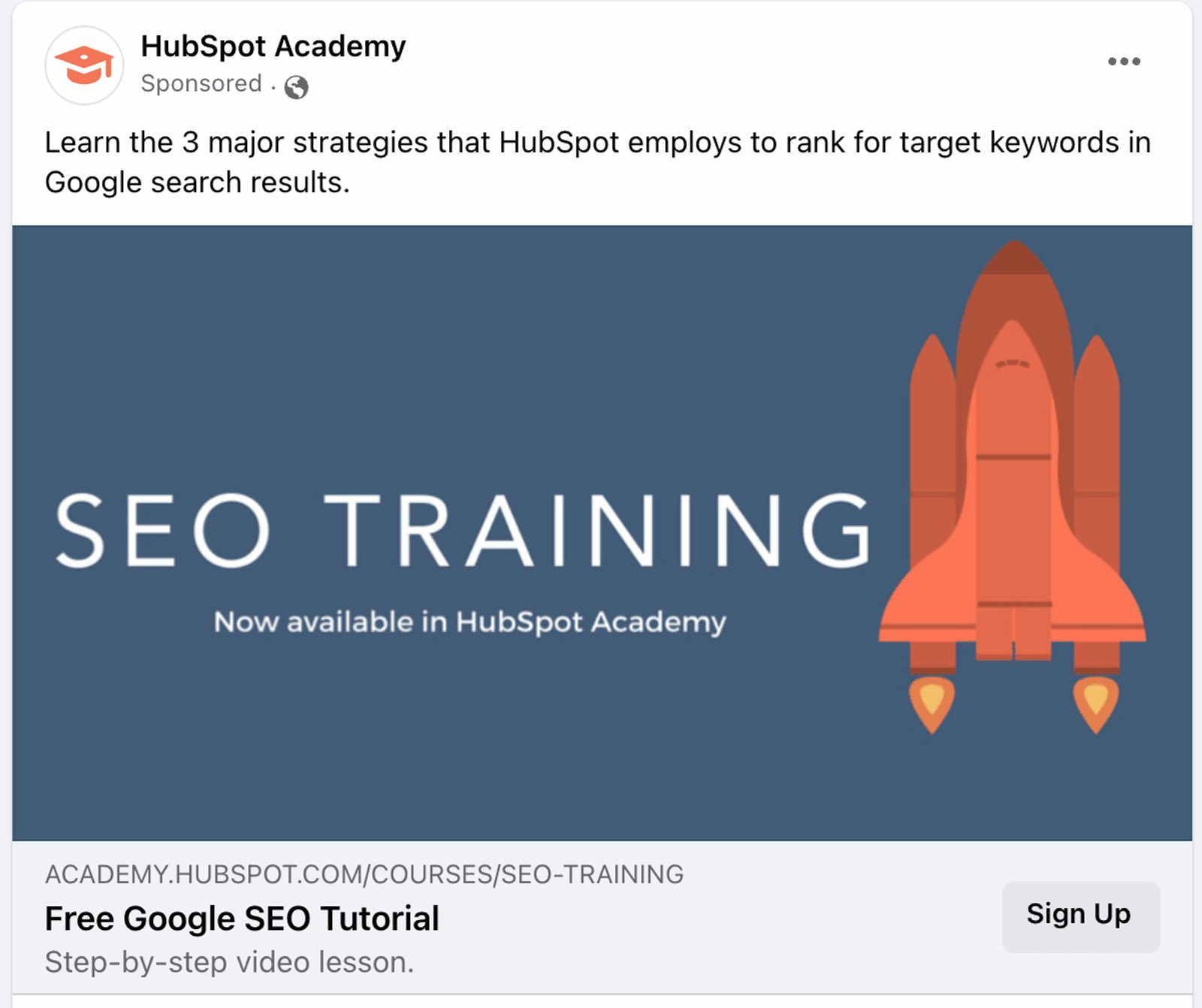
See what I mean?
Yes, outbound is interruptive. Yes, outbound doesn’t scale organically (once you stop spending, you stop receiving value). And yes, outbound tactics don’t necessarily position your brand as a leader and authority in your industry.
But outbound has its place.
First of all, it works much more quickly than inbound. Launch a campaign on Google Ads today, and you’ll start seeing results almost immediately (though some optimization will be in order).
Compare that to the classic example of inbound marketing, search engine optimization (SEO), which takes most brands several months (or even longer) to see a trickle of traffic coming through.
But more importantly, the best marketing strategies tend to combine both inbound and marketing tactics.
You might, for example, run Google Ads on keywords that are difficult to rank for while you build domain authority and search engine results page (SERP) positions with easier-to-obtain search phrases.
Or you might initiate a social media advertising campaign to build your organic audience, which you can then leverage through inbound tactics in the future.
Whichever path you choose, the point is this:
The debate between outbound and inbound is kind of moot. The question is not which 1 to do but rather which tactics you’ll use in a comprehensive marketing strategy that covers all aspects of the customer experience.
Outbound marketing approaches: 8 tactics to include in your strategy
With the above in mind, let’s review 8 powerful outbound marketing tactics that you might find useful to include in your holistic marketing strategy.
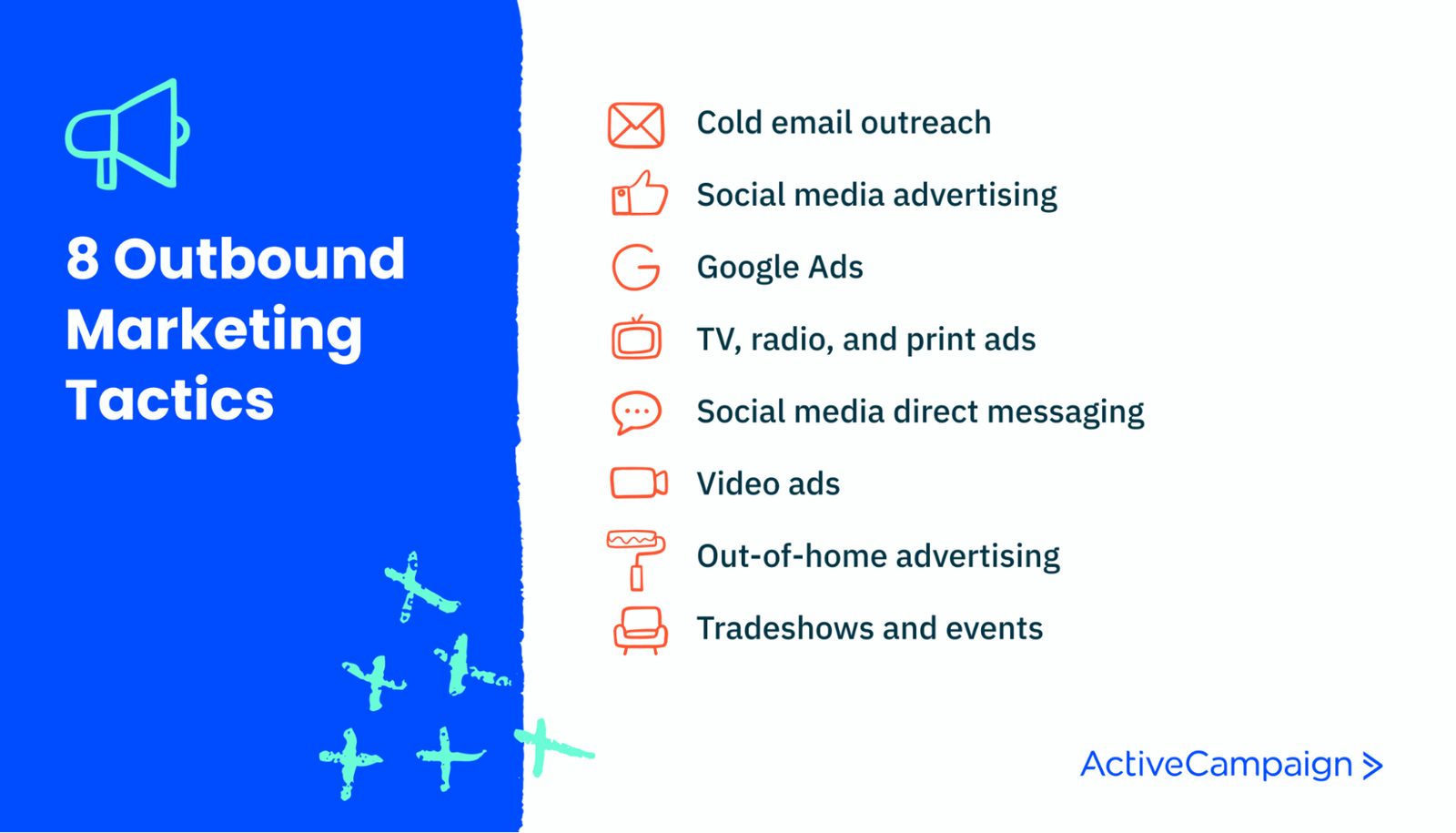
Let’s dive in.
1. Cold email outreach
A cold email is any email marketing you send where the recipient isn’t expecting your message and doesn’t know who you are (or at least, it isn’t established that they know who you are).
This tactic is more common in business-to-business (B2B) circles than business-to-consumer (B2C), requiring careful attention to GDPR.
Cold email outreach is generally used as an attention-grabbing tactic rather than an explicit sales message.
With cold email outreach, you’ve yet to establish any trust or authority, and the prospect has probably never even heard of your brand. So start things slowly.
For example, the cold email template below simply asks for the opportunity to kick off a conversation.

Not sure where to start with cold emailing?
Dive straight in with 1 of our 10 Cold Email Templates That Still Work in 2022.
2. Social media advertising
The concept of social media hardly needs explaining, though it’s worth pointing out that it can go beyond the B2C haunts, like TikTok and Instagram, and expand to platforms like:
- YouTube
- Quora
Social media advertising can take many different approaches. For starters, there are many different types of social ads.
You can promote a blog post, push an explainer video, or seek to generate leads by advertising an ebook you’ve just published.
Tipalti, a procurement management platform, does the latter.
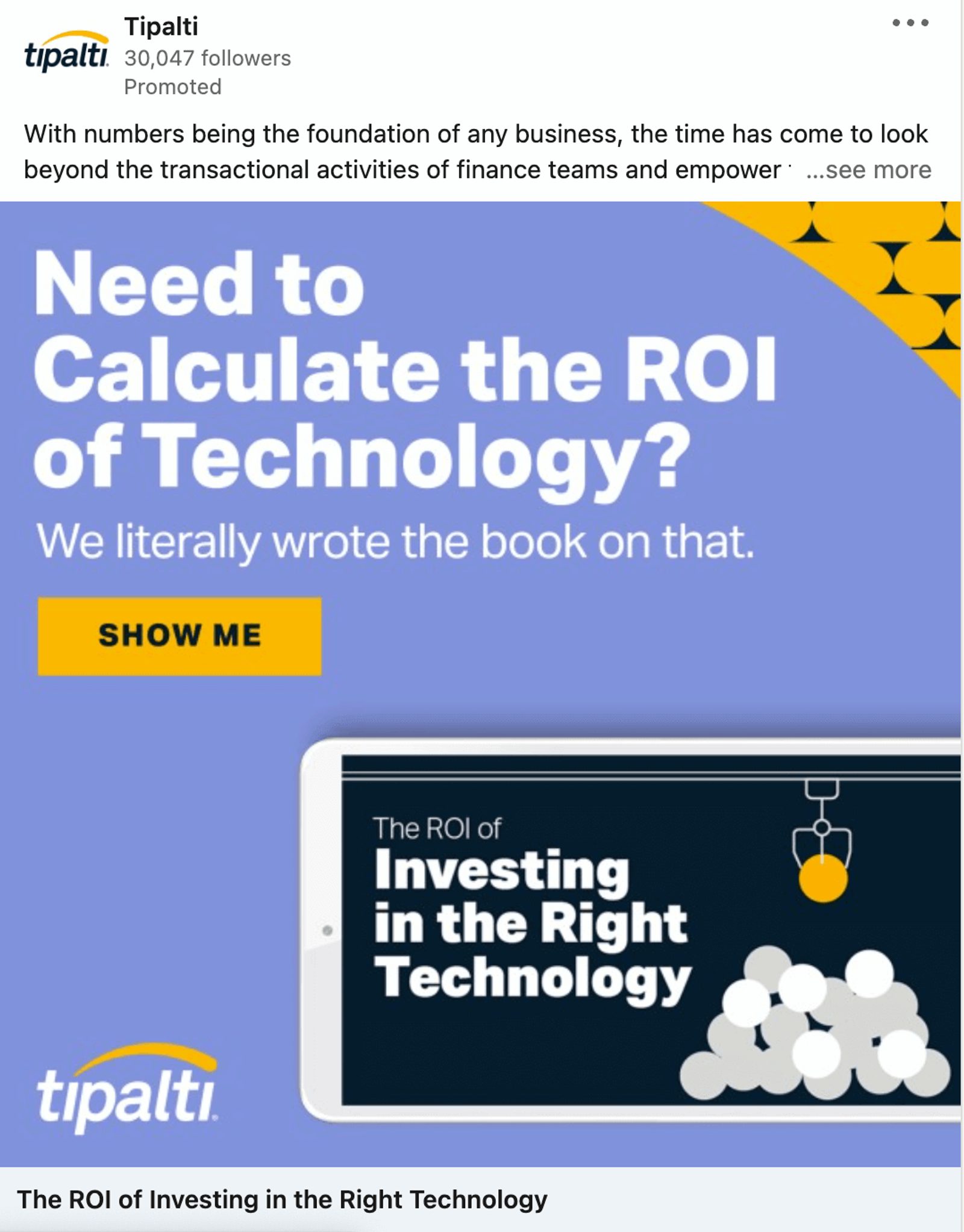
In the B2B world, it's generally best practice to use social media ads for top-of-funnel activities.
In B2C, however, you can go straight for the throat (I mean, the sale).
For example, mattress retailer Koala uses sponsored ads on Facebook to drive customers to a dedicated landing page for their Easter sale.
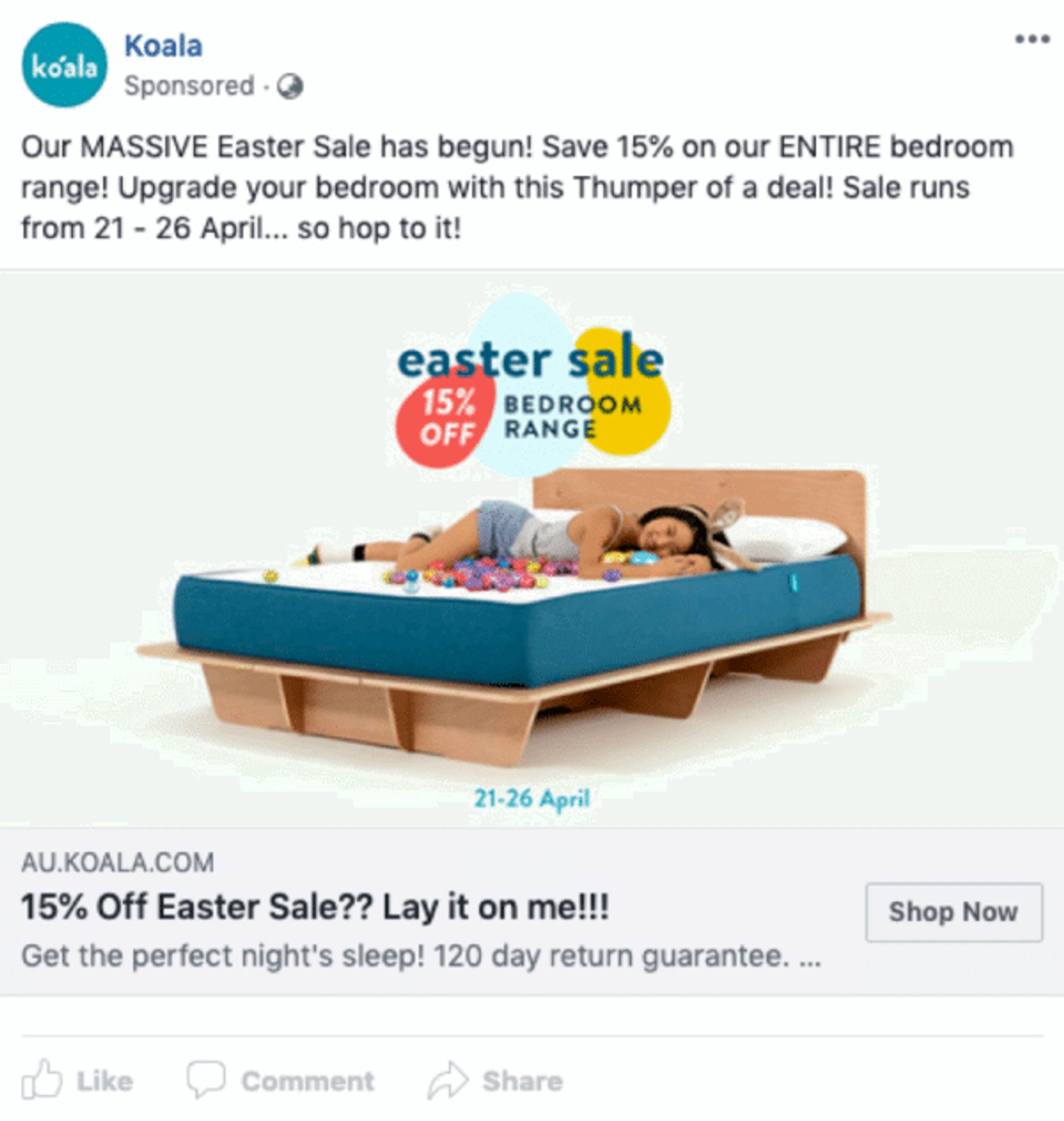
Just getting started with social media ads?
Check out what Jessie Deschane, ActiveCampaign’s social media and community manager, has to teach on the subject: Episode 55: Managing Social Media with Jessie Deschane.
3. Google Ads
Google Ads are exactly what they sound like—ads that run on Google search results.
Yes, other search engines exist, and you can advertise on them, too. But we'll focus there because Google is the most widely used.
Take a look at this screenshot of the Google search results for the keyword “project management platform.”

The top 3 results are Google Ads (signified by the little “Ad” next to the domain name). The latter 2 are organic search results.
Here’s a great example of where outbound marketing might beat out inbound. The Google Ads (outbound) are displayed above the organic results (inbound), giving you an edge over the competition.
Of course, Hive and Forbes aren’t paying for those positions, so there’s that to consider.
In any case, Google Ads can be an effective tactic for capturing search traffic.
The key to winning here is ensuring that the ads you run are highly relevant to the search intent. Consider the following 4 ads:

The ads from ClickUp and Top10 are super relevant, as they speak precisely to what the reader is looking for (a project management platform).
The ad from Box is a little less on the money. They’re looking to get in on the “project management” search by calling themselves a “collaboration software.”
Click through on the Box ad, and you’ll reach a landing page that advertises Box’s services—which, as we know, focus more on document storage than project management.

There is an overlap here, and project managers need a document storage solution to manage project assets. However, this ad is far less relevant to the search intent than the others and will likely not perform as well as, say, ClickUp’s ad.
Wondering if Google Ads makes sense for your company’s age and stage?
Read through our Are Google Ads Worth It for Small Business? guide to find out.
4. TV, radio, and print ads
Traditional media, like TV, print, and radio ads, are what most marketers turn to when trying to make the point that outbound is outdated and inbound is the way forward.
As you’ve seen, outbound transcends the physical and is very much involved in the digital world. However, while traditional media forms might be “old,” that doesn't mean they aren’t useful.
To give you a bit of perspective on how valuable TV advertising still is, a Super Bowl ad in 2022 costs more than $6 million.
Print advertising can be a great way to invest in a brand, like this example from Pedigree:

Print advertising can also be used to promote your services directly, and it even has a space in the B2B world.

Whichever tactic you decide to use, identify a channel through which reaching the relevant audience is easy.
With digital marketing tactics, it’s very easy to specify the characteristics of the kinds of people you’d like to advertise to to improve your conversion rate and return on investment (ROI).
When looking at physical media forms, like TV and print, you need to ensure that the captive audience you’re advertising to needs your product or service.
There’d be little use in Brumark running the above ad in a Cosmopolitan magazine, for example.
Learn more about using paid media as part of your outbound marketing strategy here.
Keep Track of Your Outbound Efforts
5. Social media direct messaging
Direct messaging is a newer type of marketing afforded by the rise of social media platforms.
It’s pretty similar to email, except it takes place on social media sites like LinkedIn.
Here’s a great example from media buying platform The Trade Desk of how social media direct messaging works:

Like in our cold email example, this direct message works well because the marketer isn’t trying to sell directly.
In fact, there’s no pitch in there at all. It’s all about value, with The Trade Desk providing a free playbook for using first-party data in a post-cookie marketing environment.
This approach somewhat blurs the line between sales and marketing, as it’s part of the social prospecting process that many B2B sales reps use. Teams can use tools for automating LinkedIn messages to scale the process.
Learn more about this tactic in our guide: Social Prospecting: What It Is and 5 Tips to Do It Well.
6. Video ads
While video advertising does come under the social media ads banner (because it generally takes place on social platforms like Instagram and YouTube), it deserves mention as an outbound marketing tactic.
Video advertising allows you to deliver a ton of information in a short period.
The amount of information you can communicate in a 15-second video is far more than in, say, 15 seconds’ worth of text.
Zapier uses video advertising on YouTube to demonstrate a case study of how 1 customer uses it to automate their lead management process.

Video advertising platforms like YouTube also give you a ton of data to play with when measuring your campaigns’ effectiveness. In fact, that’s a whole other topic in itself.
Learn about it with our dedicated run-through: 5 Ways to Measure Video Marketing: The Most Important Video Marketing Metrics.
7. Out-of-home advertising
Out-of-home (OOH) advertising is the technical term for any ads that appear in outdoor media.
The most common examples include:
- Billboards
- Bus, train, and subway stops
- On buses themselves
- Posters
- Wallscapes
These are very commonly used in B2C verticals and can double as branding exercises and sales-generating tools. This wallscape from Odwalla is a great example:

B2B brands tend to opt for OOH ads less often, primarily because their audience is smaller and more targeted.
While a brand like Odwalla can target almost anyone, a B2B brand like ClickUp has a unique audience profile.
However, certain areas lend themselves toward B2B out-of-home advertising, provided the demographic in that region has a strong makeup of the audience required.
You’ll regularly see bus ads from ClickUp in San Francisco, where there is a huge presence of tech startups that can benefit from using a project management platform like ClickUp.
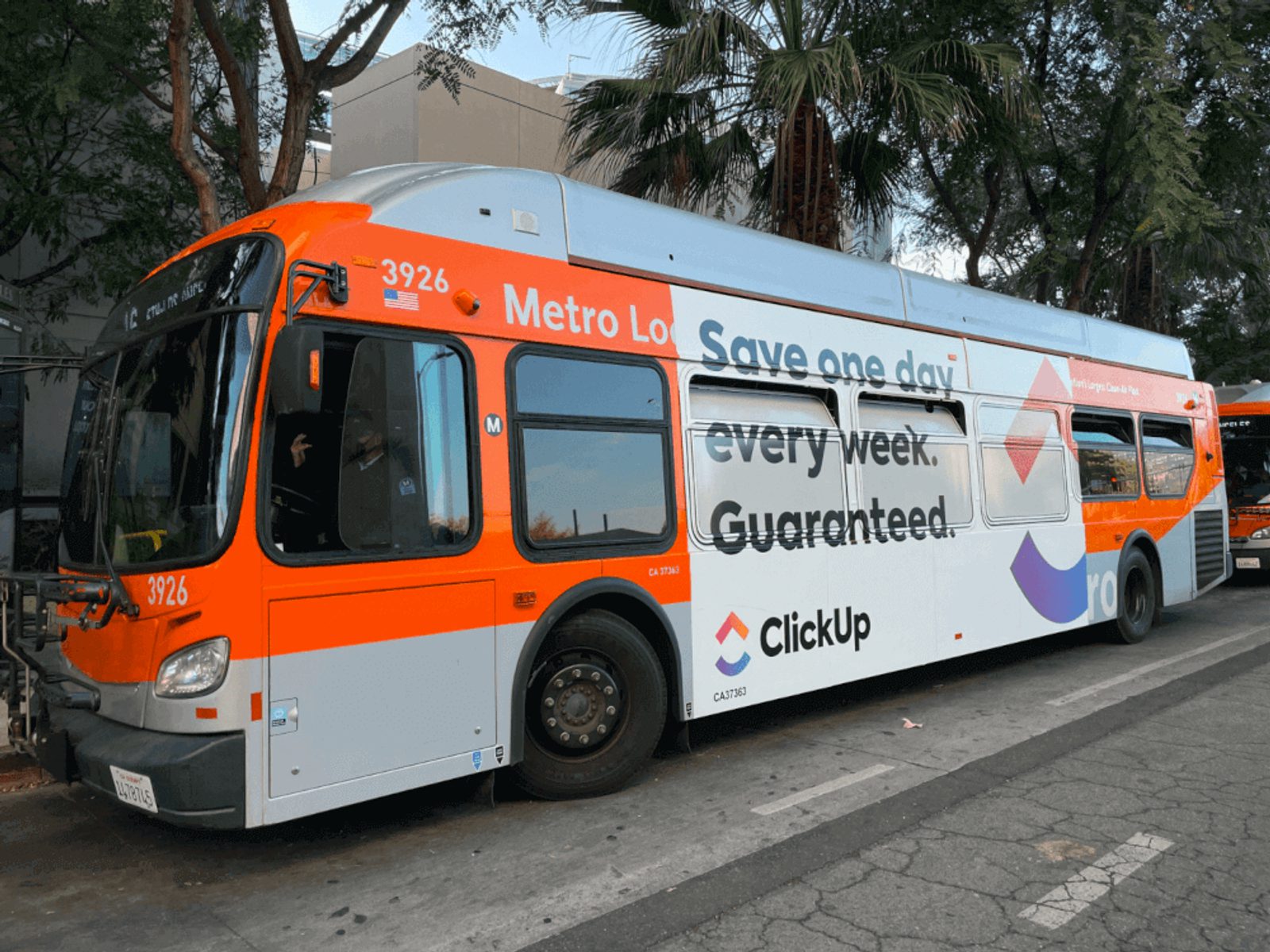
8. Tradeshows and events
The last outbound marketing tactic on our list is an in-person type channel: tradeshows and events.
Your company sets up a stall at a tradeshow and seeks to sell its product or service or generate sales leads on-site.
For most brands, the purpose of attending a tradeshow should be to generate leads. This is especially true in B2B circles, where customers are likely to wait to purchase.
The best way to generate traction and kick off conversations with potential customers is to engage in a speaking event at the show.
If you can, get 1 of your brand’s experts onto a panel discussion, or go 1 better and secure a dedicated speaking spot.
Frequently asked questions
What is an example of outbound marketing?
The classic example of outbound marketing is the advertisement, placed as a digital banner ad or social media post.
Other examples of outbound marketing include:
- Google Ads and other search advertisements
- Cold email
- TV, radio, and print ads
- Out-of-home advertising
- Tradeshows and events
What are outbound marketing tactics?
Outbound marketing tactics are the specific activities you engage in to attract customers using an outbound approach.
One example of an outbound marketing tactic is social media advertising.
With this outbound marketing tactic, your goal is to advertise to a relevant target audience who hasn’t heard of you before but might express interest in purchasing your product or service.
What is the goal of outbound marketing?
The primary goal of outbound marketing is to attract new customers. However, marketing strategies might include any number of other goals related to this, such as:
- Growing brand awareness
- Maximizing revenue per customer
- Increasing website traffic
Conclusion
Outbound marketing might be the older, more traditional approach, but that doesn’t mean it’s dead in the water, or you shouldn’t consider implementing outbound marketing tactics.
In fact, the best marketing strategies typically incorporate a combination of inbound and outbound channels.
Learn more about outbound marketing’s counterpart, inbound marketing, in our dedicated guide: 7 tactics to include in your inbound marketing strategy.





